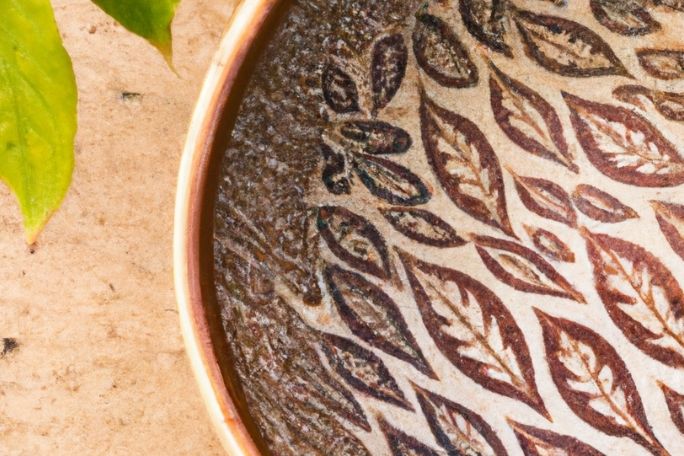Lesson summary
Students explore the patterns of natural objects found in the school yard. Students take photos and collect a range of these objects, and in particular a range of leaves with different patterns.
Learning intentions:
Students will...
- create artwork inspired by nature
Success criteria:
Students can...
- identify patterns in the natural world
- use descriptive language
- work with the medium of clay.
Lesson guides and printables
Curriculum links
Select your curriculum from the options below.
Lesson details
Curriculum mapping
Australian Curriculum (v9.0) content descriptions:
Visual Arts:
Students learn to:
- use visual conventions, visual arts processes and materials to plan and create artworks that communicate ideas, perspectives and/or meaning (AC9AVA6C01)
General capabilities: Critical and Creative Thinking,Personal and Social Capability.
Cross-curriculum priority: Sustainability
Relevant parts of Year 5 achievement standards:
By the end of Year 5, students select and use visual conventions, visual arts processes and materials to create artworks that communicate ideas, perspectives and/or meaning. They present documentation and artworks that communicate ideas, perspectives or meaning in informal and/or formal settings.
Resources required
- Bamboo skewers
- Clay slab/piece of clay – one per student (see Teacher Content Information for more details)
- Cling film
- Clipboards
- Kiln or oven (unless you are using air-dry clay)
- Plastic bowls
- Rolling pins (optional)
Skills
This lesson is designed to build students’ competencies in the following skills:
- creativity
- empathy
- social skills
Additional info
Level of teacher scaffolding: Medium - the teacher reads a picture book, leads and guides discussions and gives feedback to students.
This lesson is designed to be taught outside. It contains all the tools required for students to reap the benefits of being outdoors while learning the outcomes of the Australian Curriculum. By spending time outdoors and connecting to nature, students are more likely to care for and conserve nature as adults.
This is an original Cool+ lesson.
Related professional learning
Introduction to Secondary STEM
Quick summary: This course will help you understand the essential foundations of STEM teaching and learning and provide opportunities to help build knowledge, skills and confidence to take on STEM in your classroom.


Welcome back!
Don't have an account yet?
Log in with:
Create your free Cool.org account.
Many of our resources are free, with an option to upgrade to Cool+ for premium content.
Already have an account?
Sign up with:
By signing up you accept Cool.org's Terms and Conditions(Opens in new tab) and Privacy Policy(Opens in new tab).